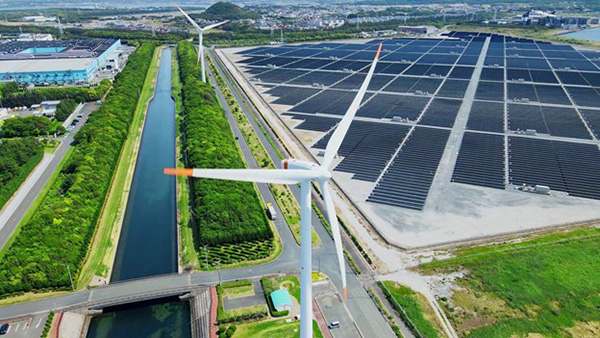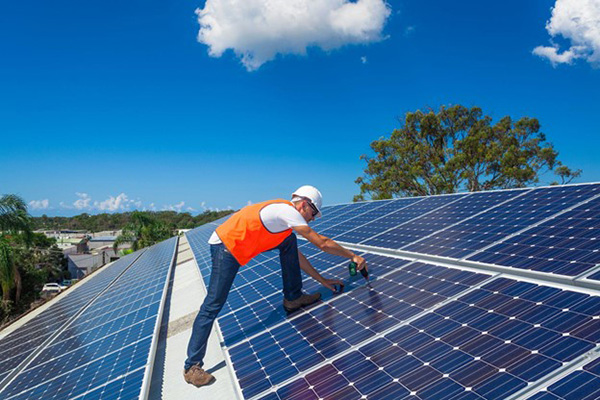It’s not news that most climate scientists believe the Earth is headed toward a point of no return when it comes to human-created global warming. Much of this stems from our greenhouse gas emissions (GHG emissions), such as carbon dioxide (CO2). Fortunately, we can start rolling the clock back slowly through carbon emissions reduction and other initiatives, such as carbon offset programs.
But do carbon offsets work, and will they significantly impact global warming? We cover this and more below.
What Are Carbon Offsets, and How Do Carbon Offsets Work?
Carbon offsets are reductions of greenhouse gas emissions (GHG emissions) or increased carbon storage via tree planting or land restoration that an organization can use to offset emissions created in other locations. One offset credit is worth the equivalent of one metric ton of carbon dioxide or other GHG.
Companies initially receive their carbon credit by getting them from certified carbon offset programs that aid in developing a community, supporting ecosystems, adding emissions-efficient technology, or removing GHG emissions from the atmosphere.
Carbon offset credits are transferable, meaning organizations can sell or trade them with other organizations. Whoever obtains a carbon offset credit can then retire the credit to receive the one metric ton offset toward their GHG emissions.
How Are Carbon Offsets Verified?
When purchasing or trading for carbon offset credits, a critical step is the verification of the offset itself. This is where a third party comes in to verify the credit to various available standards, including Verified Carbon Standard (VCS), Climate Action Reserve (CAR), or the American Carbon Registry (ACR).
The verification process evaluates the calculations of actual avoided or contained GHG emissions to determine the credit is legitimate. The verification process can take three to six months, depending on the size and complexity of the project and organization.
Are Carbon Offsets Legitimate?
Yes, carbon offsets are legitimate and can help offset an individual or organization’s carbon footprint. However, when buying carbon offsets, it’s critical to ensure you’re purchasing them from a legitimate seller, such as Terrapass, that’s verified the offset is real, enforceable, and permanent. It’s also the third-party seller’s responsibility to ensure the offset is additional.
Here’s what these requirements mean:
- Real: This means the company is legitimate. It owns property and plans to take action within its company to reduce emissions.
- Enforceable: This means a third-party company physically verified the company exists and the potential to reduce GHG is present. This also means there is a means to penalize the company for not following through with the GHG reduction.
- Permanent: A third party installs rules forcing the GHG-reduction changes to remain in place permanently via penalties and other means.
- Additional: There must be proof the organization is making changes to its plans or procedures to reduce GHG emissions. It’s attached to a legitimate improvement or sustainment.
For example, a farmer can’t promise not to cut down his forest to make room for a strip mine just to receive a carbon offset credit and then resell it if he never intended to cut down his forest in the first place.
So long as the carbon offset meets these qualifiers and is third-party verified, it is a legitimate carbon offset.
What Makes a Good Carbon Offset?

When buying or trading for a carbon offset credit, you must verify it is a high-quality carbon offset, meaning the actions that resulted in the issuance of the carbon credit made the same or more positive impact on the world than if you offset that much GHG emissions yourself.
You can use two tests to determine a good carbon offset. First, does the carbon offset represent at least one tonne of additional, permanent, and unclaimed GHG emissions? The second test is that the offset doesn’t stem from activities that could cause other social or environmental harms, such as displacing wildlife or interfering with local residents’ abilities to live freely.
Another qualification of a good carbon offset is that it’s additional, meaning there was an actual change made, the changes were permanent, the carbon offset is unclaimed, and the offset was not overestimated.
Which Is the Best Carbon Offset Company?
You can choose from a range of third-party carbon offset sellers, but we feel Terrapass deserves the lion’s share of your attention. Whether you’re an individual or a business looking to offset your GHG emissions, Terrapass has options for you.
Terrapass makes it simple to determine just how many carbon offsets you need to buy with its carbon calculator. With the calculator, you’ll learn just how much GHG you need to offset and easily get set up on the monthly subscription to buy the offsets you need.
Terrapass has high standards when selecting carbon-offsetting programs to fund. Our standards ensure the offsets we offer are real, additional, permanent, quantifiable, and third-party verified. The credits are never double-counted or double-sold.
We also only work with Gold Standard carbon offset projects. Gold Standard is a certification body that ensures every climate change dollar goes as far as possible. All Gold Standard projects must do no harm, involve all relevant stakeholders, deliver real GHG reduction, comply with all laws and Gold Standard principles, be transparent, undergo regular monitoring, and be retired on the Markit registry.
Who Can Certify Carbon Credits?
Third-party companies are responsible for carbon credit certification. They apply a set of rules to the program to ensure it meets their standards, then they issue the certificate. Once certified, the company can retire the credit to offset its own GHG emissions or sell or trade the credit to other organizations or individuals.
Some of the companies that perform carbon credit certification include:
- Verra
- Gold Standard
- Green-e Climate
- SCS Global Services
What Is Carbon Verification?
Carbon verification is the process of verifying that the GHG-reducing actions an organization takes are meeting the standards for issuance of a carbon offset. The exact procedure will vary by project, but it will include ongoing monitoring and reporting to ensure the project performs as predicted.
Another part of the verification process is registration on a carbon-offset registry to ensure an offset is not double-counted or double-sold.
What Is a Carbon Offset Registry?

A carbon offset registry is responsible for tracking offset projects and issuing credits for GHG emission reductions or removals. It is responsible for turning these offset credits into credible, fungible commodities.
The registries also record offset credit ownership and assign a serial number to each credit for tracking. Once an organization or individual retires a credit, meaning they use it to offset emissions, the registry retires the serial number to prevent double-sale.
There are several nonprofit voluntary registries, including:
- American Carbon Registry (ACR)
- APX, Inc.
- Markit
- Verra
How Do You Certify Carbon Neutrality?
To certify as carbon neutral, meaning you produce no Scope 1 or 2 GHG emissions or you reduce those emissions and offset others via offset certificates, you must go through a rigorous process. This all begins by measuring your GHG and understanding where you can cut your own GHG emissions and where you must offset a certain amount of carbon to reach net-zero GHG emissions.
For example, reducing Scope 1 or Scope 2 GHG emissions is possible because these are within your organization’s control. Further, you’re encouraged to address your Scope 3 emissions, such as delivery vehicles and end-user-created emissions are not within your control. You may consider to purchasing offsets to cover all your Scope 3 emissions.
Once you reach your carbon-neutral target, you can have a third-party entity, such as CarbonNeutral or Climate Neutral, complete the certification process.
What Does it Mean to Purchase Carbon Offsets?
In some ways, individuals and organizations can reduce their carbon footprint through business initiatives or lifestyle changes. This can include switching from a fossil fuel car to an electric car, installing solar panels, or a company adding new GHG-control devices in their power plants or opting for renewable energy, such as a wind farm or solar panels. Organizations can also receive carbon credits through carbon capture, such as reforestation or agreeing not to participate in deforestation.
However, some GHG emissions are unavoidable or out of your control. For example, Scope 3 emissions are all carbon emissions involved in delivering a product or service that aren’t under the organization’s control. This would include delivery trucks, employees commuting to work, customers driving to the store to buy your product, product disposal at the end of its life, and more. For an individual, this could include traveling long distances for work.
In these uncontrollable or unavoidable cases, you can purchase carbon offsets directly from an organization or a marketplace. One carbon emissions offset accounts for one metric ton of GHG emissions. So, if you know your total air travel for the year will result in two tonnes of GHG, you can buy two carbon offsets to make your travel carbon neutral.
When you purchase these carbon offsets from an organization or third-party seller like Terrapass, the cash it nets generally gets reinvested into new carbon-reducing programs, helping keep the cycle of carbon emissions reduction moving.
Purchasing Carbon Offsets Can Help You Do Your Part in Reducing Global Emissions

If the ongoing threat of a climate crisis due to global warming is top of mind for you, you may be wondering, “Do carbon offsets work to reduce global emissions?” You can rest assured they do. Just make sure you’re purchasing carbon credits and offsets that are certified
Whether you’re an individual looking to offset your own emissions, such as air travel, fossil fuel burning, or all those deliveries you get, or you’re part of a large corporation seeking climate solutions to reach carbon neutrality in 10 years, carbon offsets can help.
In either case, if you’re looking to counteract your individual emissions or your company’s emissions, Terrapass has carbon offset options to help you achieve your goal.
Brought to you by terrapass.com
Featured image:
- Coinsmart. Europe’s Best Bitcoin and Crypto Exchange.Click Here
- Platoblockchain. Web3 Metaverse Intelligence. Knowledge Amplified. Access Here.
- Source: https://terrapass.com/blog/do-carbon-offsets-work





